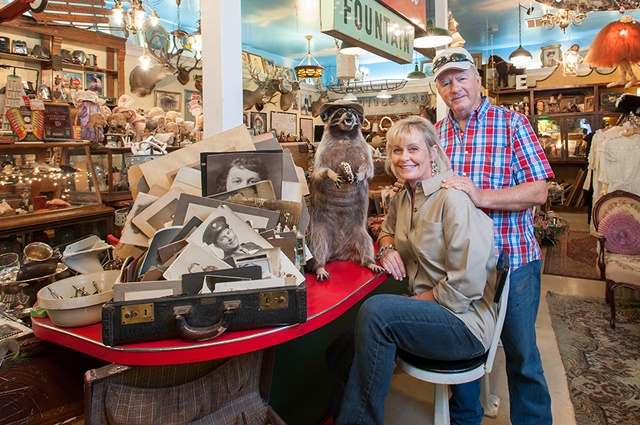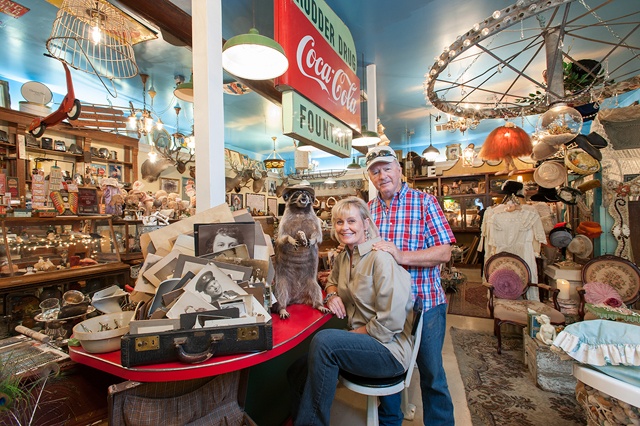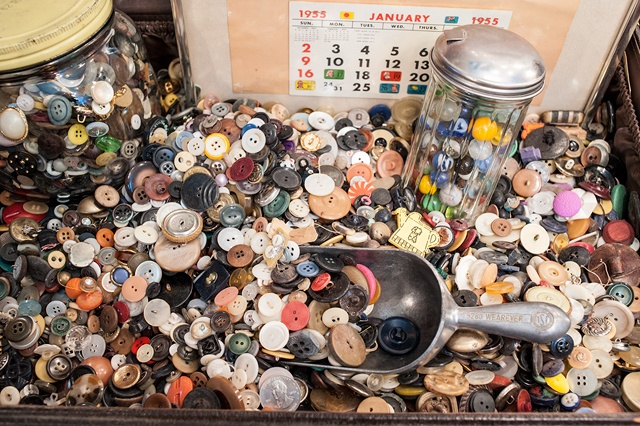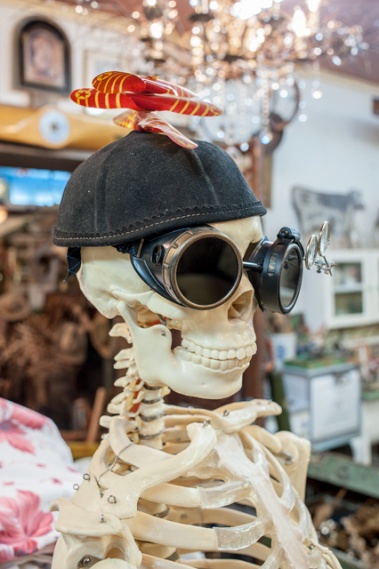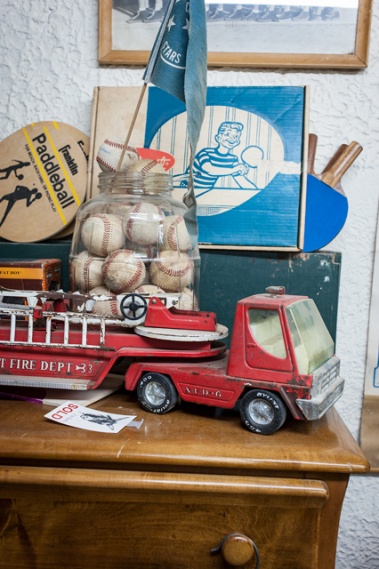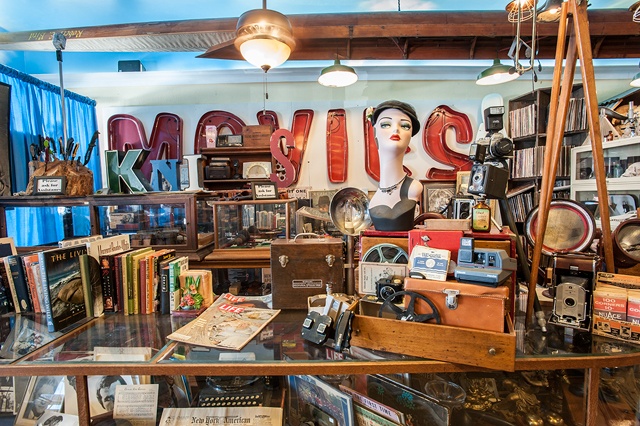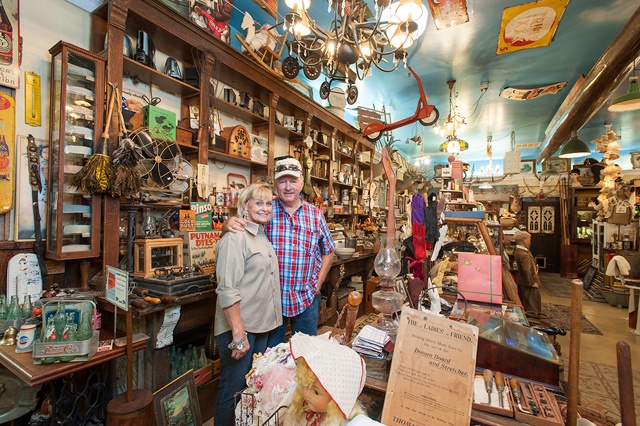En route home from a recent trip, we have time for one last stop in Brady, located in the Texas heartland. So I suggest a gingerbread-trimmed storefront on the courthouse square.
“Looks like arts and craft stuff,” James whispers as we walk past a white bike, rusted birdcage and wooden window shutter arranged on the sidewalk.
Just another antique store, I think. Oh, well. This won’t take long.
Past the creaky screen door, Patsy Cline croons “crazy for feeling so lonely.” Her sad strains follow us as we step into a dimly lit shop artfully crammed with yesteryear.
Two hours later, spellbound and amazed, we finally tear ourselves away from owners DeAnn and Joe Evridge, who know the histories and stories behind nearly every button, book, hook, boat and more that fill the walls, ceilings and floors inside D and J’s Good Ole Days.
“We’re selling memorabilia that we’ve collected from our families and also bought since we married 25 years ago,” DeAnn says. “Our home looks just like this.” She laughs. “In fact, we’ve added on five times to our house just to make more room!”
The Evridges already owned the former dime store building that houses D and J’s Good Ole Days. Before opening for business last December, they quickly filled up the space. “So we knocked a hole in the wall and expanded into the adjoining building, which used to be a jewelry store,” DeAnn says. That explains the room-sized black vault built into a far corner and decorated with a claw-foot tub and “suds-covered” (cotton) doll.
Behind a rack of vintage clothing, DeAnn opens a wooden display case and shows us canvas swimming boots that hid a woman’s ankles in the early 1900s. There’s also Victorian hair art from the 1800s that preserved remnants of beloved family members, and a funeral invitation that recalls a time when people could attend a funeral only if invited.
Standing by yet another display case and tapping on the glass, Joe points to a small porcelain container that reminded me of a gravy bowl. “That’s an infant-to-invalid feeder,” Joe says. “They’d use that to feed you pabulum as a baby and then get it out again to feed you gruel when you’re old.”
At the other end of the store, Joe picks up a comb-looking contraption. “This is a solid brass hair straightener,” he says. “You don’t see these any more!” From the ceiling above us hangs a 1922 sculling boat with built-in lace-up boots and custom-made seats. “The rowers had wooden seats made to fit their butts,” Joe says.
In the middle of the store, a 1950s soda fountain display features authentic stools, including one from Brady’s long-gone drugstore. Kids can buy old-time candy (like sassafras, horehound, licorice and taffy) from wooden bins and pick out vinyl records to hear on an old turntable.
In a crowded aisle, Lee Scott of Houston, seated on a low stool, scoops up handfuls of buttons from a baby’s metal bathtub. “This is heaven,” she sighs. “I make jewelry from these. I’ve never seen so many in one place.”
At a back counter, Kay Beardsley of San Angelo is paying for a hatbox shelf (crafted by Dee) and a gingerbread man cookie cutter. “There’s so much to look at,” Kay says. “You just can’t see everything. Anybody who loves antiques would love this place.”
Naturally, we buy a few treasures, too—a 1929 Western Electric desk phone, a 1937 Philco Tombstone radio that still works, and a heavy wrought iron garden chair.
“That was like browsing in a museum,” James says on the way home. “I’m so glad you found that store.” I just smile.
——————–
Sheryl Smith-Rodgers, a member of Pedernales EC, lives in Blanco.
